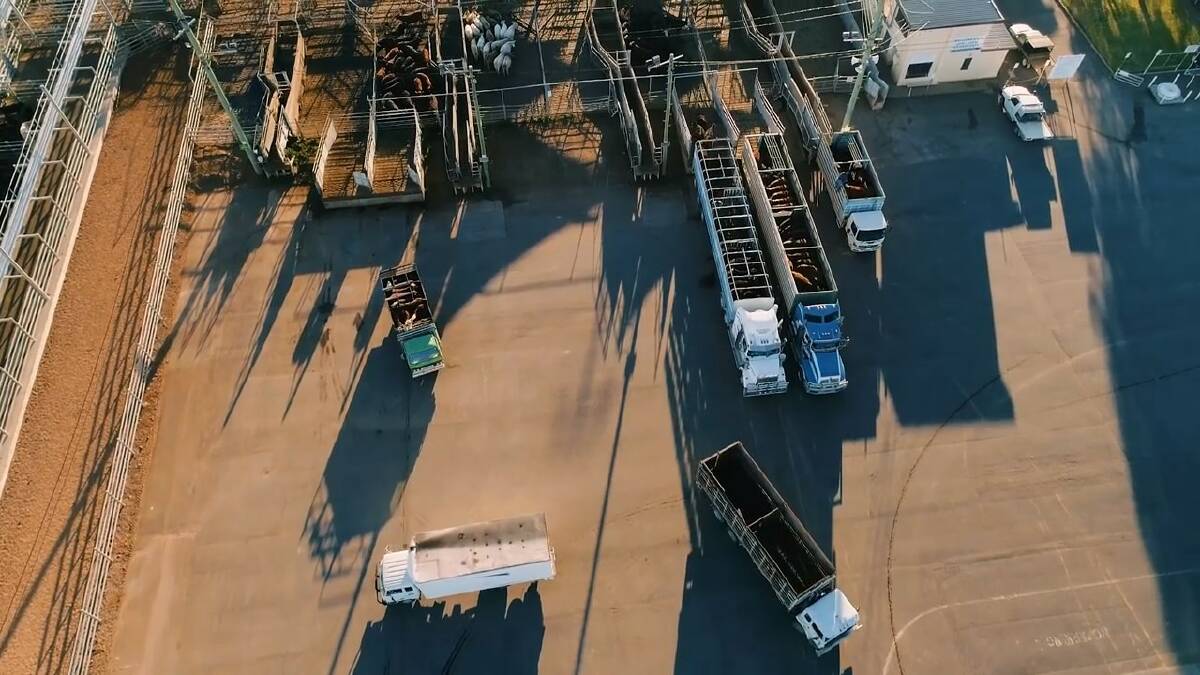
A BIG spike in numbers on offer has done nothing to ease the heat in the cattle market.
Subscribe now for unlimited access to all our agricultural news
across the nation
or signup to continue reading
The benchmark Eastern Young Cattle Indicator continues to climb further into record territory after barrelling over the $9 a kilogram carcase weight level for the first time in history last week.
Yesterday's trading saw the EYCI hit 907.75c, a jump of 24c in the past week and a solid 194c above the year-ago level.
The national yarding more than doubled last week, yet agents report supply is still nowhere near meeting demand.
The extra numbers, led by Queensland, came on the back of producers anticipating the rise and looking to cash in and some availability of weaners typically marketed at this time, agents reported.
Thomas Elders Markets calculated the East Coast yardings last week to be 132 per cent above the previous week. That meant for the first time this season, the weekly East Coast throughput was above the seasonal average trend, according to analyst Matt Dalgleish.
Queensland jumped a whopping 188pc, NSW 125pc and Victoria 50pc.
Restockers are making up half the successful buyers around the rails, with Meat & Livestock Australia analysts saying rainfall across much of the supply area has invigorated confidence and combined with the desire to acquire as many cattle as possible to ensure production heading into winter.
Northern NSW agent Robbie Bloch, CL Squires at Inverell, said even though numbers were up last week on account of a few weaner cattle coming onto the market, they were still a fraction of what would be considered normal.
"Up to 20,000 weaners have historically gone through Inverell in autumn. This year we'll have 5000," he said.
"The cattle are just not there, and won't be for some time. The cattle people got in to restock are slow lead-time - we won't see calves from those restockers until next year.
"It's that extremely tight supply that is underpinning the price rise."
Mr Bloch said the pandemic had also changed the shape of things, in that the strength of the domestic market has gone with the cattle market rise.
"That domestic demand has meant that where exporters have pulled up, domestic fellows were still there and giving enough money at the end to entice the restocker to pay the higher prices," he said.
Supply was not expected to improve much at all through winter, Mr Bloch said.
"When spring arrives, we might see a few more finished cattle off crops and the kill job might settle down a bit but largely the supply/demand ratio is going to remain favourable for a strong cattle market," he said.
Tim O'Dwyer, Ray White Rural at Dalby in Queensland, agreed.
"The weather is in favour of a strong market," he said.
"Everyone has grass and water and is only selling what they absolutely need to.
"A few more weaners will come onto the market in coming weeks but there will be plenty of buyers chasing them. There is also plenty of NSW influence around here still."
In Victoria, demand is also way outstripping supply, with restockers and feedlotters, including northern demand, scrambling for supply.
Wangaratta agent Gordon Perkins, Corcoran Parker, said buyers had now recognised if they wanted to stay in cattle, this was where the buy-in price was at.
While the region was now looking for rain grass-wise, two tremendous seasons in a row had meant enormous amounts of silage were cut last year and the need for mouths to feed was red hot, he said.
Numbers have also continued to climb online, with AuctionsPlus recording a 13pc week-on-week jump. Steer categories in cents per kilogram terms were up for the lighter lines, while the heavier categories eased.
ALSO IN BEEF:
Start the day with all the big news in agriculture! Sign up below to receive our daily Farmonline newsletter.


